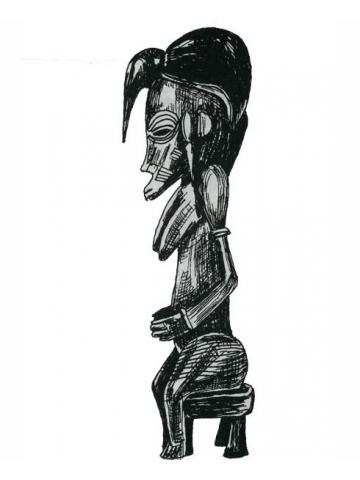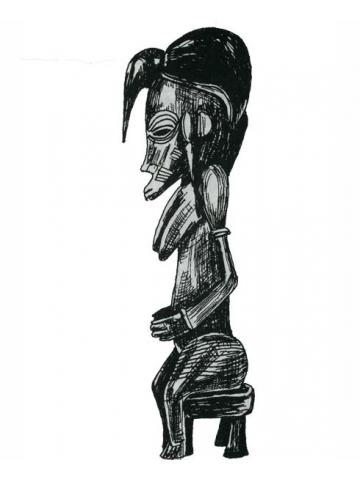
African figurine of the foremother

GRANDMOTHER
In West Africa, the foremother was traditionally depicted as a woman with large breasts sitting on a chair. To beg the goddess for a rich harvest and many children, the participants in the ceremony during the night procession rhythmically hit the ground.
In ancient times, maternal deities were worshiped in all African regions located south of the Sahara. Almost everywhere these views are very similar. In the minds of people, the foremother is a powerful woman with large breasts, with whom she feeds her children. The myths and legends associated with this goddess differ in different tribes. In Ewe, in Togo, for example, they say that the soul of a child before birth must visit the place of "humanization", the country of Amedzofe. There, high in the mountains, in the center of Togo, lives the spirit of a mother who teaches good behavior to every child who is to be born.
The Dogons in Mali are descended from a heavenly god who once spent a night with the goddess of the earth, after which she gave birth to twins.
Source: "Symbols of Africa" Heike Ovuzu
In the Yoruba country, in Nigeria, to this day, the goddess of the land, Oduduva, is revered, whose name means "She who created all living things." The goddess herself is depicted here as the primitive matter of the earth. Together with her husband, the god Obatalo, she created the earth and all living things.
The goddess of the land Muso Kuroni, who is revered by the Bambara in Mali, is similar to the Indian goddess of the forests, Kali-Parvati. After she united with the sun god Pemba, who penetrated her with his roots in the form of a tree, she gave birth to all animals, people and plants. Her appearance is described in different ways, Among other things, she is seen in the guise of a black-Go leopard, since she is also the goddess of darkness, with two claws she grabs unsuspecting Li-Dei, causing women to menstruate, and produces trimming-Nie Wu boys and girls who, through this intervention, must free themselves from their savagery.
Source: "Symbols of Africa" Heike Ovuzu
Leave a Reply